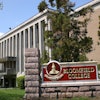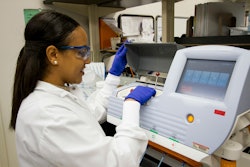 In With the New
In With the New
Just when you think you’ve gotten comfortably ahead on information technology tools, whether it’s for home, work or school, along comes a new product or application that throws you off kilter for not having the latest and greatest. To say that the digital revolution unsettles might be an understatement. In this year’s special technology report, Peter Galuszka writes about how the newest wave of information technology is bringing both benefits and challenges to campuses, be they large or small.
At Duke University and the Georgia College and State University, the Apple iPod, a device known chiefly for its entertainment value, has been adopted for academic use.
Hard to believe that a few years ago we were reporting on how many minority college students owned personal computers or if communities of color had access to the Internet. The buzz word was “digital divide.” Who had access to technology, who didn’t?
Now we’re talking about Tablet PCs, BlackBerrys and iPods.
You don’t hear the term “digital divide” much anymore. Does that mean we’re all “connected?” Having access to certain technologies is also a matter of priorities. Some students prefer to have an iPod, but won’t invest in a personal computer. We call that “connected, but not plugged in.”
Ronald Roach met up with some young people who are connected and plugged in when it comes to technology — even to the point of presenting papers at computer science conferences. In “Transformative Connections,” Ronald examines a community-based K-12 computing education program in Washington, D.C., that over two decades has exposed its students to the latest information technology applications, such as those in the high-performance computing and artificial intelligence realms.
On the public policy side of technology, Charles Dervarics reports on the status of the technology bill to assist minority-serving institutions in upgrading and improving their technology infrastructure. The legislation fizzled in Congress last year, so officials at MSIs are hopeful that this much-anticipated bill will actually have support. Just last month, Virginia senator George Allen reintroduced the Minority-Serving Institution Digital and Wireless Technology Opportunity Act during a ceremony at historically Black Norfolk State University in Virginia.
You can use cell phones to take pictures and to send text messages, so why not use them to study for the SAT? Lydia Lum reports on this emerging application. No one predicts this will replace review courses and study guides, in fact, fair testing advocates say it’s just another way to make a quick buck, but it is an example of innovative technology and an effort to meet young people where they are — on their cell phones.
Technology is changing at lightning speed. The good thing about technology is that it eventually forces you to adapt, making it difficult for you to hang on to the old.
That’s what all of our stories essentially highlight — efforts to make sure that today’s young people have not only access to technology, but are educated on how to maximize its use.
Hilary Hurd Anyaso
Editor
© Copyright 2005 by DiverseEducation.com





















